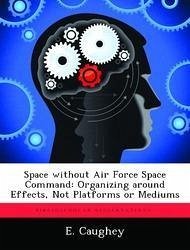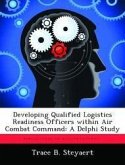In 2004, the Joint Staff J3 stated that space operators did not have a proper understanding of warfighting and space operations were not sufficiently integrated into warfighting operations. Additionally, the 2001 Commission to Assess United States National Security Space Management and Organization stated there was a lack of confidence in the Air Forces' willingness and ability to fully address the requirement to provide space capabilities. This situation must change. By reviewing the Air Force's organizational journey to incorporate space operations, then examining the problem through the lenses of new operational concepts like effects-based operations, perhaps a alternate way ahead for the Air Force can be found. By using old terms in new ways, one can create a new sight picture or paradigm that will allow a better understanding of space's place in the Air Force. First, air and space are two distinct mediums that support one aerospace mission. Second, effects-based and capabilities-based thinking provide a way to think about military space operations that changes the focus from platforms and mediums to missions and military utility.
Hinweis: Dieser Artikel kann nur an eine deutsche Lieferadresse ausgeliefert werden.
Hinweis: Dieser Artikel kann nur an eine deutsche Lieferadresse ausgeliefert werden.








